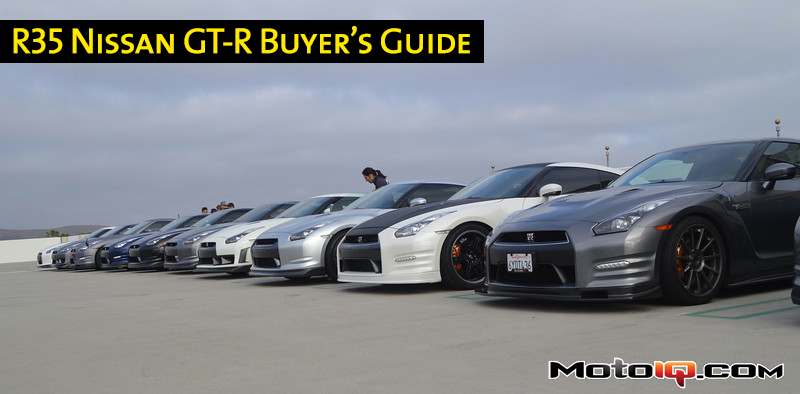,

Launch Control
The first launch control scheme (LC1) would be what we call violent. The “undocumented” launch control, with VDC (vehicle dynamic control or traction control) off and 4500 rpm clutch dumps, was fast. It tended to lead to violent wheel hop in the 4000 lb, 480 horsepower car, which caused the destruction of a few 1st gears. 26 launches in a row could do that. In order to prevent the American public from destroying every single transmission Nissan decided to reprogram the launch control. The new program was called LC2 in the GT-R community or Launch Control 2.
Each progression of the launch control has gotten better and faster. LC3 for 2011 was a 3300 rpm clutch slip launch with VDC remaining on, so it was covered under the warranty. With LC4 in the 2012 car the revs were bumped to 4000 rpm. LC4 finally saw the introduction of launch control as an advertised feature, not just an Easter egg. Nissan called it R Mode Start and after four launches in a row you were required to go on a mile and a half drive before it would let you engage it again. In the LC4 cars 0-60 times came in anywhere from 2.8 to 3.2 seconds. The 2013 car had further launch control refinement, predictably called LC5. Nissan claimed the 0-60 times could dip to 2.7 seconds, not too bad for a stock street car.
 Top 0-60 numbers were generated by LC5 equipped GT-Rs with the above setup switches in R-Comf -R modes respectively.
Top 0-60 numbers were generated by LC5 equipped GT-Rs with the above setup switches in R-Comf -R modes respectively.Transmission (Transmissferdifferential?)
The main driver behind the yearly adjustments to the GT-R’s launch control can be found in its transmission design. The US market 2009 Nissan GT-R, released in July 2008, was the first to use an all-wheel-drive dual clutch transaxle (GR6) in a production car. Borg Warner supplies their DualTronic transmission technology which consists of a dual clutch control module, wet clutch model, synchronizer assemblies and shift actuation modules for the transmission internals.

Like any transmission the GR6 is an assembly. Further, it’s a very complicated assembly as the clutches, control module, transmission gears, transfercase and the rear differential are all housed in a single casing. At first it was not considered a repairable part for service. It was labelled a remove and replace part, regardless of the severity of the issue. As you can imagine, if you have a problem with the clutch and have to replace the entire rear end, it isn’t cheap. In fact, the GR6 is not at all cheap to replace. Guys that broke them were looking at bills with labor in the $20k range. That meant an $80k car with a $20k bill to make it go again. As a consequence, arms were thrown in the air leading to lawsuits and class action filings making some rich lawyers. To stem the tide Nissan eventually reprogrammed the launch control and we ended up with LC2. Nissan did actually step up and repair/replace a lot of GR6 transmissions as well.
There are a couple types of common GR6 failures. There are the hard part failures such as snapping first gear with a LC1 launch. Then we also see some P0732/PO729 controller errors. When the transmission controller senses an issue it reverts to fail safe mode, which only allows shifting patterns of 1-3-5 or 2-4-6 depending on exactly what failed. Since the GR6 is an electronically controlled transmission, it uses solenoids to control the shifting. Solenoids are magnetic and therefore attract metal bits. When the transmission wears in it normally throws some little bits of metal around in the case. Those little bits of metal get stuck in the solenoids and jam them. So something as simple as a bit of metal in a solenoid, in the early days of the GR6, would be a warranty replacement of the whole assembly. Other failures have been related to seals within the box/clutch assembly and pressure switches. The aftermarket has figured out most of the issues with the GR6, but the official Nissan stance is typically to remove and replace the box in most circumstances.
Once GT-R owners started to make real power, control over the trans, axles and the differential were found to be issues. Control was handled with aftermarket reflashes or new boxes. A few guys snapped axles, but the GT-R is a 4000+ lb car making way north of 500 horsepower with a tendency to wheel hop. There have even been guys who have managed to snap the differential off the back of the “transmisserdiffercase.” Unlike a lot of older cars with an iron differential case, the GT-R has an aluminum case that is integrated into the transmission casing. The way it is mounted allows for the entire gearbox to put stress on the connection where the rear differential is located. As a hard launch puts a significant torsional load on the GT-R chassis this contributes a shear load to the differential case and snaps it off. Braces to support the differential are available and help minimize flex and failure on the 800 hp, 900 hp and 1500 hp cars.
Warranty
Growing up around used cars my whole life, and being responsible to fix them when they broke, meant that I am not as used to this whole “warranty” thing as most. My thoughts are you break it or it breaks then you fix it. However, it seems like a lot of people want to modify a car away from what the manufacturer specifies while still being covered under a factory warranty. They raise the boost, change the exhaust, intake, transmission programming and expect Nissan to cover it under their program. In a lot of cases Nissan has, but I personally think it’s deceitful to do that. If there is a claim and it’s legitimate, then fine, but if you break it because you ran 35 psi on 91 octane, why should they be responsible for it?
There are a lot of questions about the warranty. There are questions about launch control and warranty. Nissan changed the warranty from 2009 to 2010 and there are some important differences. Here are a few links to information on the warranty.
Warranty Information Booklet – 2009 Nissan GT-R
Warranty Information Booklet – 2010 Nissan GT-R
Warranty Information Booklet – 2011 Nissan GT-R
Warranty Information Booklet – 2012 Nissan GT-R
Warranty Information Booklet – 2013 Nissan GT-R



